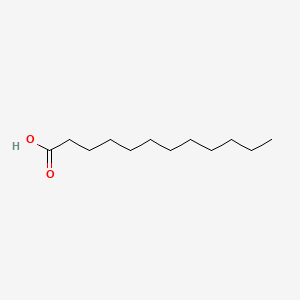| MeSH term | MeSH ID | Detail |
|---|---|---|
| Peripheral Arterial Disease | D058729 | 7 associated lipids |
| Vascular System Injuries | D057772 | 2 associated lipids |
| Atherosclerosis | D050197 | 85 associated lipids |
| Stroke | D020521 | 32 associated lipids |
| Brain Infarction | D020520 | 17 associated lipids |
| Carotid Artery Injuries | D020212 | 8 associated lipids |
| Vasculitis | D014657 | 14 associated lipids |
| Thrombosis | D013927 | 49 associated lipids |
| Thromboangiitis Obliterans | D013919 | 4 associated lipids |
| Starvation | D013217 | 47 associated lipids |
| Seizures | D012640 | 87 associated lipids |
| Prostatic Hyperplasia | D011470 | 20 associated lipids |
| Obesity, Morbid | D009767 | 8 associated lipids |
| Nephrosis, Lipoid | D009402 | 2 associated lipids |
| Neovascularization, Pathologic | D009389 | 39 associated lipids |
| Malabsorption Syndromes | D008286 | 16 associated lipids |
| Lung Neoplasms | D008175 | 171 associated lipids |
| Liver Neoplasms, Experimental | D008114 | 46 associated lipids |
| Liver Diseases, Alcoholic | D008108 | 13 associated lipids |
| Leukemia, Myeloid | D007951 | 52 associated lipids |
lauric acid
lauric acid is a lipid of Fatty Acyls (FA) class. Lauric acid is associated with abnormalities such as Infection, Renal tubular disorder, Hypertensive disease, Obesity and Mycoses. The involved functions are known as Transcription, Genetic, Signal Transduction, Mutation, metaplastic cell transformation and Anabolism. Lauric acid often locates in Skin, Plasma membrane, Cytoplasmic matrix, Body tissue and Palmar surface. The associated genes with lauric acid are Gene Family, SLC33A1 gene, Homologous Gene, Open Reading Frames and P4HTM gene. The related lipids are Fatty Acids, Oleic Acids, Palmitates, Stearates and 9,11-linoleic acid.
Cross Reference
Introduction
To understand associated biological information of lauric acid, we collected biological information of abnormalities, associated pathways, cellular/molecular locations, biological functions, related genes/proteins, lipids and common seen animal/experimental models with organized paragraphs from literatures.
What diseases are associated with lauric acid?
lauric acid is suspected in Renal tubular disorder, Hypertensive disease, Infection, Renal vascular disorder, Obesity, Mycoses and other diseases in descending order of the highest number of associated sentences.
Related references are mostly published in these journals:
| Disease | Cross reference | Weighted score | Related literature |
|---|
Possible diseases from mapped MeSH terms on references
We collected disease MeSH terms mapped to the references associated with lauric acid
PubChem Associated disorders and diseases
What pathways are associated with lauric acid
There are no associated biomedical information in the current reference collection.
PubChem Biomolecular Interactions and Pathways
Link to PubChem Biomolecular Interactions and PathwaysWhat cellular locations are associated with lauric acid?
Visualization in cellular structure
Associated locations are in red color. Not associated locations are in black.
Related references are published most in these journals:
| Location | Cross reference | Weighted score | Related literatures |
|---|
What functions are associated with lauric acid?
Related references are published most in these journals:
| Function | Cross reference | Weighted score | Related literatures |
|---|
What lipids are associated with lauric acid?
Related references are published most in these journals:
| Lipid concept | Cross reference | Weighted score | Related literatures |
|---|
What genes are associated with lauric acid?
Related references are published most in these journals:
| Gene | Cross reference | Weighted score | Related literatures |
|---|
What common seen animal models are associated with lauric acid?
There are no associated biomedical information in the current reference collection.
NCBI Entrez Crosslinks
All references with lauric acid
Download all related citations| Authors | Title | Published | Journal | PubMed Link |
|---|---|---|---|---|
| Park SJ et al. | Production of poly(3-hydroxybutyrate-co-3-hydroxyhexanoate) by metabolically engineered Escherichia coli strains. | 2001 | Biomacromolecules | pmid:11749180 |
| Benson RS et al. | Fatty acid signalling in a mouse enteroendocrine cell line involves fatty acid aggregates rather than free fatty acids. | 2002 | J. Physiol. (Lond.) | pmid:11773321 |
| Thibaut R et al. | Regio-specific hydroxylation of nonylphenol and the involvement of CYP2K- and CYP2M-like iso-enzymes in Atlantic salmon (Salmo salar). | 2002 | Aquat. Toxicol. | pmid:11792434 |
| Migliore-Samour D et al. | [Immunostimulating and adjuvant activities of a low molecular weight lipopeptide]. | 1979 | C. R. Acad. Sci., D, Sci. Nat. | pmid:117939 |
| LeBrun LA et al. | Autocatalytic mechanism and consequences of covalent heme attachment in the cytochrome P4504A family. | 2002 | J. Biol. Chem. | pmid:11821421 |
| Vorachek-Warren MK et al. | An Escherichia coli mutant lacking the cold shock-induced palmitoleoyltransferase of lipid A biosynthesis: absence of unsaturated acyl chains and antibiotic hypersensitivity at 12 degrees C. | 2002 | J. Biol. Chem. | pmid:11830594 |
| Lyngby J et al. | Quantification of lipopolysaccharides in outer membrane vesicle vaccines against meningococcal disease. High-performance liquid chromatographic determination of the constituent 3-hydroxy-lauric acid. | 2002 | Biologicals | pmid:11846425 |
| Partanen L et al. | Fats and fatty acids as growth factors for Lactobacillus delbrueckii. | 2001 | Syst. Appl. Microbiol. | pmid:11876356 |
| Laureles LR et al. | Variability in fatty acid and triacylglycerol composition of the oil of coconut (Cocos nucifera L.) hybrids and their parentals. | 2002 | J. Agric. Food Chem. | pmid:11879040 |
| Orellana M et al. | Modulation of rat liver cytochrome P450 activity by prolonged red wine consumption. | 2002 | Comp. Biochem. Physiol. C Toxicol. Pharmacol. | pmid:11879783 |
